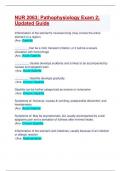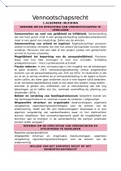Exam (elaborations)
Exam 2)NUR 2063: Pathophysiology Exam 2; Updated Guide; Questions & Answers: Guaranteed APlus Guide
- Course
- NUR 2063
- Institution
- Rasmussen College
Inflammation of the stomach's mucosal lining (may involve the entire stomach or a region) (Ans- Gastritis _________Can be a mild, transient irritation, or it cab be a severe ulceration with hemorrhage (Ans- Acute Gastritis _________ Usually develops suddenly and is likely to be accompanie...
[Show more]




